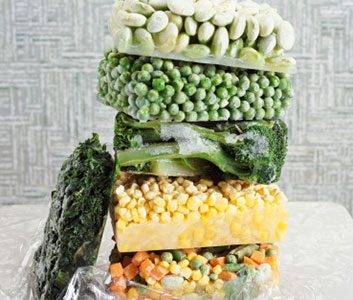
Freeze meals
Here’s a trick that will save you both time and money: Buy ingredients when the prices are right, cook enough for several dinners and freeze the extra portions, suggests Dr. Yoni Freedhoff, a weight loss expert and medical director of the Bariatric Medical Institute in Ottawa. “Stews, chilies and soup all freeze fantastically well,” says Dr. Freedhoff. Grocers tend to put the best deals on the front or back of the flyer, so you can plan your meal around the fresh produce or meat advertised there.
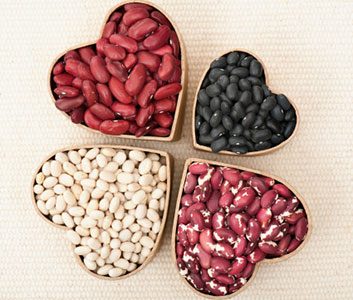
Get to know beans
Two words: Dried legumes. “They’re high in protein just like meat, but beat meat when it comes to being lower in fat and high in fibre,” explains Joshua Duvauchelle, a personal trainer in Vancouver with a certificate in nutrition from Cornell University. Compared to meat, beans are much more affordable, and dried beans are cheaper still than canned. Beans come in so many varieties: mung, pinto, adzuki, and green lentils to name a few, so you’ll never be bored. If you like Indian food, dal makes a great and affordable legumes-based meal. Check out this recipe for Red Lentil and Vegetable Dal to get started.
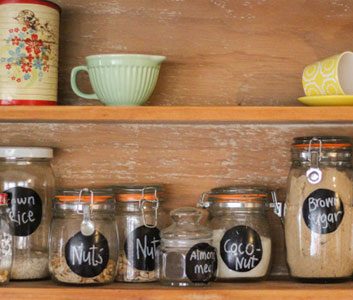
Buy in bulk
It can be cheaper to buy things in large quantities and bulk-buying also reduces the time you’ll spend in the grocery store aisle on subsequent trips. Buy dry pantry items like brown rice, nuts, quinoa and beans in bulk. Beans last for a year, while brown rice keeps for at least six months if stored properly. Other great, healthy, items to buy in large quantities when on sale? Pasta sauce, canned tuna and low-sugar, high protein granola bars.

Expand your recipe bank
Leanne Brown, a food studies scholar in New York City, wanted to help people subsisting on food stamps (or $4 a day) prepare healthy meals. Her cookbook, Good and Cheap, is available for free on her website and includes recipes like cauliflower tacos, chana masala and spicy tilapia with lime. If you can afford it, why not buy the print copy for $25 through Brown’s Kickstarter campaign? With each purchase, another copy will go to someone in need.
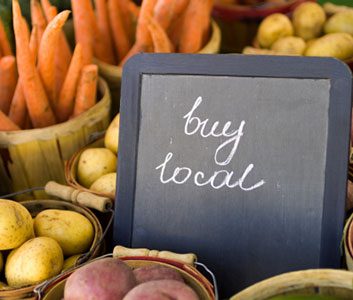
Go local
Because the produce wasn’t picked too early and packed in a truck for days, local fare from farmers markets is packed with more nutrients than imported goods. Local farmers’ markets make for a more pleasurable shop and they’re often cheaper, too. A study by a sustainability-focused US non-profit found the produce was 22 percent less than that sold at supermarkets.

Make your own
Homemade is healthier and less expensive. Instead of buying salad dressing, which can be high in salt and preservatives, take three parts olive oil to one part vinegar for an instant dressing. Add herbs, honey, lemon or garlic for a little extra kick.
An investment in a food processor pays off with all the money you’ll save by making things like pesto, hummus, salsa and baba ganoush. For example, homemade hummus (consisting of tahini, lemon juice, chickpeas – dried or canned – and some spice) works out to half the cost of store-bought. Other great items to make at home? Granola, soup stock and pickles are other items that are cheaper and often tastier when homemade.
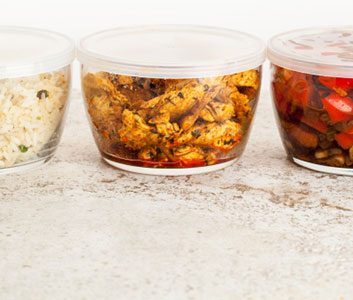
Make lunches a snap
Office lunches end up being expensive and not-so-healthy if you don’t have time in the morning to throw something together. Duvauchelle suggests doubling up the recipe for your evening meal and immediately packing the leftovers in a to-go container. Ta-da, instant lunch!
Alternatively, if you have a fridge at your office, you can prepare a bag of food on Sunday that you can mix and match in salads for the week. You could include, for example, a packet of greens, an avocado, a can of tuna, cooked chicken breast, cheddar cubes, cooked pasta, basil, cherry tomatoes and a small container of salad dressing. The key is to make healthy lunches even more convenient than the restaurant down the block.
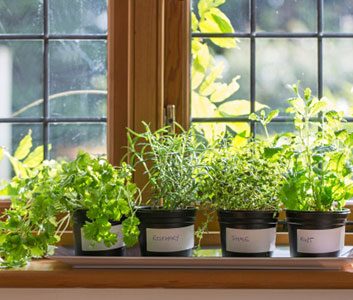
Grow your own
Why spend money for a whole bunch of rosemary or mint when a recipe only calls for a tablespoon? Grow your own herbs and you can cut off just what you need. Depending on your green thumb, you can start with the seeds (the cheaper option) or seedlings. Herbs need as much light as possible, so put your pots near an east- or west-facing window and remember that herbs also need to drain well. If you’re cutting often, you’ll want to make sure you use an organic fertilizer to keep the leaves growing.
Related:
• 20 healthy salad recipes
• Healthy 30-minute meals
• 8 budget-friendly superfoods
